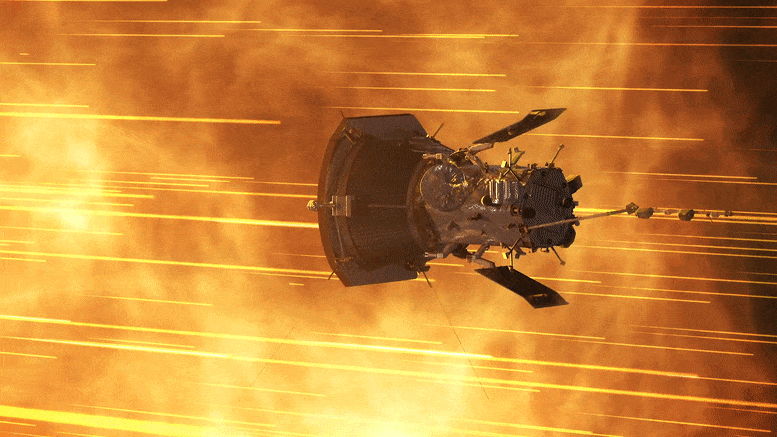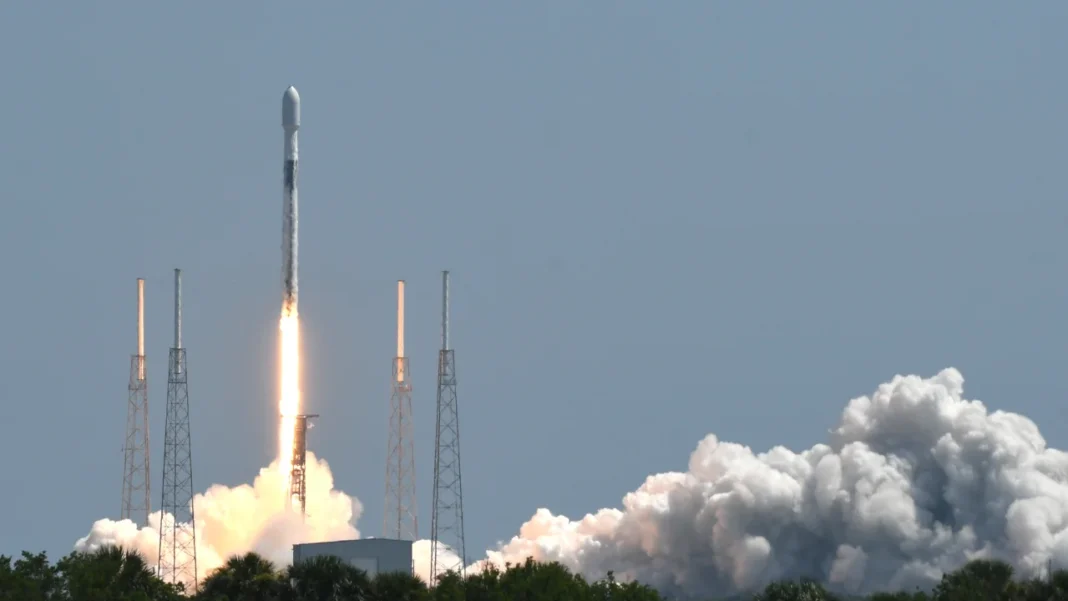NASA’s Parker Solar Probe, through groundbreaking research, has revealed a remarkable mechanism driving the sun’s fast wind, enabling it to reach gravity-defying speeds surpassing 1 million miles per hour. This exciting discovery holds immense potential in predicting solar eruptions, advancing our knowledge of cosmic wind phenomena, and even aiding the quest for habitable planets beyond our solar system.
Unraveling the Solar Wind Mystery: In a recent publication in the renowned journal Nature, a team of researchers, led by James Drake from the University of Maryland and Stuart Bale from UC Berkeley, utilized data from the Parker Solar Probe to shed light on the enigmatic nature of the sun’s wind. While Earth’s strongest winds reach speeds of around 200 miles per hour, they are overshadowed by the solar wind’s astonishing velocity. The team found that the release of magnetic energy near the sun’s surface propels the fast solar wind, composed of ionized particles known as plasma, outward from the sun.
Implications for Earth and Beyond: The solar wind plays a vital role in forming the heliosphere, a vast magnetic bubble protecting our solar system’s planets from cosmic rays. However, it also carries plasma and the sun’s magnetic field, leading to potential disturbances when it interacts with Earth’s magnetosphere. Understanding the mechanism behind the sun’s wind is crucial for predicting geomagnetic storms and their impact on communication networks and power grids.
Exploring the Sun’s Magnetic Energy: Previous studies established the connection between the sun’s magnetic field and the solar wind, but the underlying mechanism remained elusive. Building upon previous work, the researchers suggested that magnetic reconnection, a process extensively studied by James Drake, drives the heating and acceleration of the solar wind. Magnetic reconnection occurs when opposing magnetic fields cross-connect, resulting in the release of substantial energy. These magnetic field annihilations drive explosions on the sun, revealing the underlying mechanism behind the solar wind.
Insights from the Parker Solar Probe: Leveraging data collected by the Parker Solar Probe during its historic journey into the sun’s corona, the researchers analyzed plasma emissions from the outermost layer of the sun. With its proximity to the sun, the probe captured unprecedented observations that are inaccessible from Earth or satellites located farther away. This allowed the team to provide a comprehensive understanding of the bursts of magnetic energy occurring in coronal holes, the source of the solar wind.

Continuous Magnetic Reconnection: Through their analysis, the researchers discovered that magnetic reconnection between open and closed magnetic fields, known as interchange connection, is an ongoing process rather than an isolated event. They concluded that the continuous release of magnetic energy propels the outward jet of heated plasma, overpowering gravity and giving rise to the sun’s fast wind.
Implications for Space Exploration and Beyond: By studying these frequent smaller energy releases on the sun, scientists hope to gain insights into and potentially predict larger and more hazardous eruptions that expel plasma into space. Furthermore, the implications of this study extend beyond Earth. Winds generated by celestial objects play a crucial role in shielding planetary systems from cosmic rays, thus influencing the potential habitability of other worlds.
The remarkable findings from the Parker Solar Probe’s research offer a captivating glimpse into the mysteries of the sun’s wind. By understanding the mechanisms driving the solar wind and the magnetic energy releases occurring on the sun, scientists can enhance our ability to predict solar eruptions, protect Earth’s infrastructure, and explore the habitability of other planets. The ongoing mission of the Parker Solar Probe continues to uncover the secrets of our closest star, opening new avenues for scientific exploration and deepening our understanding of the universe.
- Unveiling the Mystery: Exploring the Secrets of the Sun
-
- The sun holds intriguing secrets that continue to captivate scientists and researchers worldwide. Through extensive study and observation, we are gradually unraveling the enigmatic nature of our closest star.
- 5 Fascinating Facts About the Sun That Will Amaze You
- Delve into the wonders of the sun with these five captivating facts:
- The sun is a gigantic ball of hot gas, composed primarily of hydrogen and helium.
- It generates energy through a process called nuclear fusion, where hydrogen atoms fuse to form helium, releasing vast amounts of energy in the process.
- The sun’s surface temperature reaches an astonishing 10,000 degrees Fahrenheit (5,500 degrees Celsius).
- Enormous solar flares and coronal mass ejections occur on the sun, releasing powerful bursts of energy and particles into space.
- The sun’s gravity holds our solar system together and influences the orbit of planets, moons, and other celestial bodies.
- Delve into the wonders of the sun with these five captivating facts:
- Unlocking the Secrets: The Sun Planetarium Show Revealed
- The Secrets of the Sun planetarium show offers an immersive experience that takes audiences on a captivating journey into the heart of our star. Delve into the awe-inspiring processes that fuel the sun, from nuclear fusion to magnetic fields, and gain a deeper understanding of its importance in sustaining life on Earth.
- Exploring the Unreachable: Could We Ever Visit the Sun?
- While the concept of visiting the sun seems intriguing, the extreme conditions surrounding our star make it an impossible feat for humans. The sun’s scorching temperatures, intense radiation, and powerful gravitational pull make any physical visit unattainable. However, through advanced technology and spacecraft like the Parker Solar Probe, we can study the sun from a safe distance and continue uncovering its secrets without risking human life.











